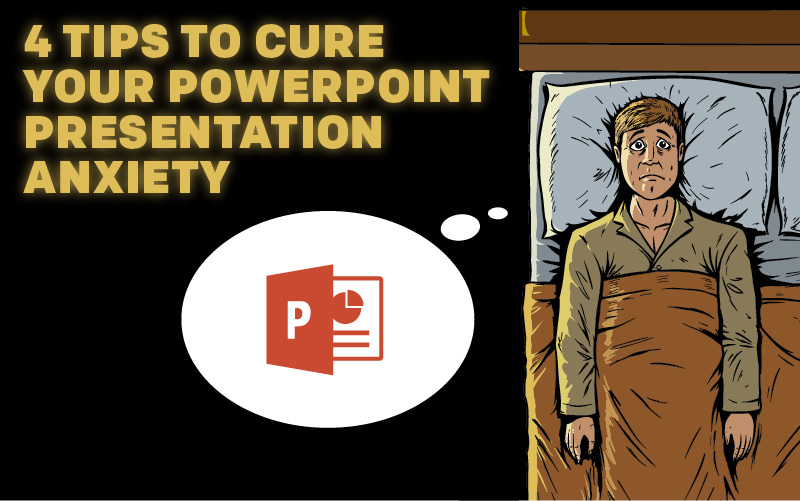PowerPoint is a mode that students, teachers, employees and other individuals used to present material to a larger audience. They can include images and words in a sophisticated and stylish manner that captures the attention of their audience members. While the tool is easy to use and offers both beginner and advanced tools, people do not always feel confident when they present. If you suffer from presentation anxiety, you should keep some tips in mind to ensure that your next speech or demonstration is a success.
Learn to Extemporize
The last time that you used PowerPoint to give a presentation, consider the strategy that you employed. Many people write down notes on cards and try to memorize all of them, along with all of the information from the PowerPoint presentation, before they give the speech. However, learning to extemporize is an important speech-giving technique. Extemporization means that you do not have the exact words that will say planned out. That may seem terrifying to you, but part of the reason you have anxiety is probably because you are afraid that you are going to forget what you wrote down. If you can speak naturally about the topic, then at least some of that fear starts to subside.
Also, speaking naturally about the subject has a positive effect on your audience. They are likely to see you as more of an expert on the subject, building your credibility, or ethos, with them. Instead of seeing you as merely a tool through which information is conveyed, they will respect you as an authority on the subject matter about which you speak, leading to more positive results of the speech.
Choose Proper Graphics and Templates
No matter what the goal of your presentation is, you want to ensure that it looks professional and polished. Walking into a presentation with a display that looks as though it was created by someone in a beginner’s class likely contributes to your anxiety as well. Our stock images and PowerPoint graphics allow you to select a model that matches with the tone and formality of your event. Also, these features let you consider the needs of your target audience members. For example, different graphics, fonts and wording will appeal to a group of first-year students at a high school than to a group of adults who recently graduated from a doctoral program at an Ivy League institution. You can allow the visual elements of your presentation to build ethos as well.
Practice and Time Your Speech
Another source of anxiety comes from a lack of preparation. Perhaps you did not take the time to practice your speech the last time that you gave one. Even if you know the material well, you may want to amend the way that you convey certain information or the order in which you provide details. You may also recognize that you forgot to include important information. However, you cannot experience this process of self-critique if you never hear how your speech sounds. It’s not enough to run through it quickly once before the presentation. Instead, take out a recording device, whether it is audio or visual, to record yourself while giving the speech. Then, you can play it back to hear areas for improvement.
Also, you need to make sure that the speech is timed correctly. By doing so, you’ll have a greater sense of confidence. You won’t need to worry that you are exceeding the time limit when you are on the stage or that you have to scramble to come up with more content. Once you hear how long the presentation is, you can decide if you need to edit it down or choose another topic to add in.
Change Your Mindset
Anxiety can certainly be caused by external factors or by internal factors that are beyond human control. However, in a number of cases, people can use the power of their minds to control the anxiety. You should ask yourself what the worst possible case scenario is and then consider how unlikely it is that such a situation will even occur. Preparing yourself to face the worst often helps to rid some of the anxiety because you have a greater sense of control over the situation.
Furthermore, consider the perspective of the people in the audience. While they do not want to see a poor presentation, they also are unlikely to be expecting the most amazing speech they have ever heard in their lives. You can aim to give that to them, but remember, they are mostly looking to trust you, the speaker, and to obtain valuable information from your presentation that will actually have an impact on their lives.
Anxiety before making a presentation is something that a large number of people experience, but you can learn to calm it. Give us your tips for overcoming presentation anxiety in the comments below!


Recent Comments